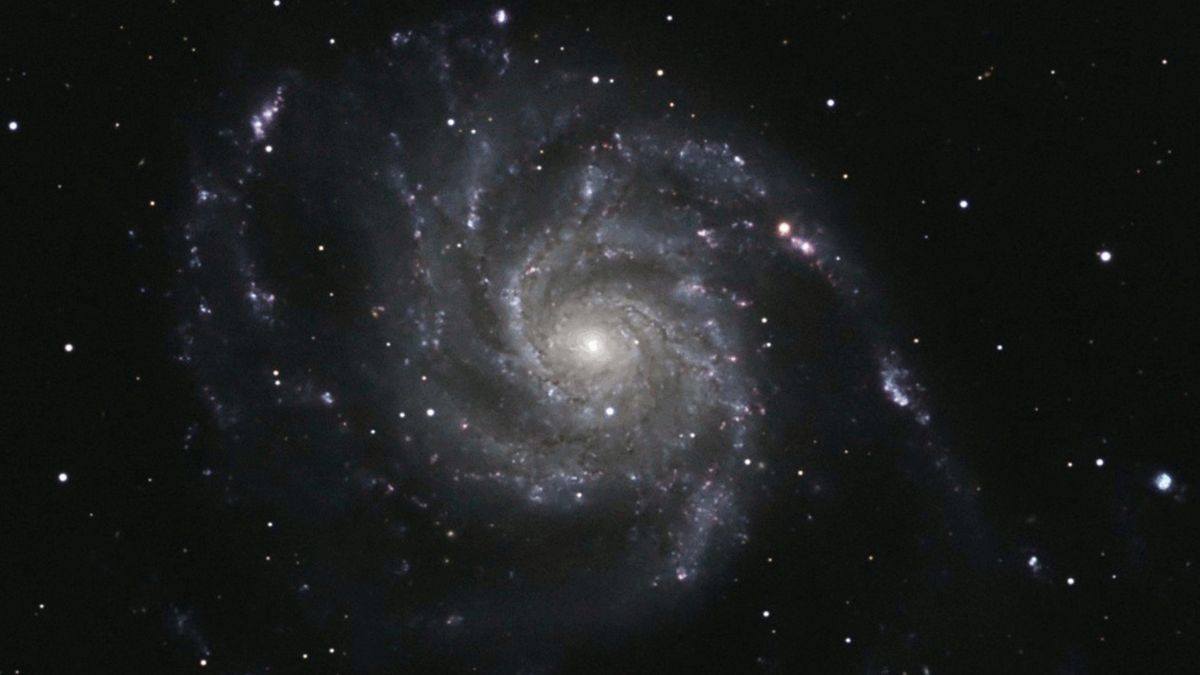For the past few days, astronomers have been pointing their telescopes at a familiar celestial body in our spring night sky to catch a glimpse of a rare event: a new supernova — a star that has both literally and figuratively “burst” onto the scene.
This new supernova has appeared in a galaxy – a city of stars – outside our own. Known as the Pinwheel Galaxy, the galaxy (also known as Messier 101, or M101) is a large, loosely wound, diffuse, open-faced spiral galaxy that can be seen through a small telescope provided the sky is dark enough. You will need a wide field of view and a low power lens to be able to see it positively.
Long exposure images will show half a dozen spiral arms of this galaxy. In some of these photos taken in recent days, a new star that has not been seen before has appeared.
But this is by no means a “new” star. He is dying.
Related: What is a supernova?
The pinwheel galaxy containing the new supernova is located near the boundary that separates Ursa Major (Ursa Major) from Boötes the Herdsman. If you locate the Big Dipper, imagine a line extending from two of the stars in the handle, Alioth and Mizar. Continuing this line a similar distance beyond the mizar will place one in the general vicinity of the M101.
Experienced amateur astronomers familiar with observing M101 can visually see the supernova as a spot of light out of place in one of the spiral arms.
Just note that this galaxy and supernova aren’t the easiest things to see in the sky. Part of the reason its appearance is so problematic is its apparent size: M101 is roughly one-third the Moon’s apparent diameter; Its overall brightness is therefore so “diffused” that the contrast between it and the background sky makes it somewhat difficult to perceive.

What we see in this new supernova is a star many times larger and more massive than our Sun. If such a star were to replace the Sun in the solar system, it could extend beyond the orbit of Mars. Stars produce their energy by fusing hydrogen into helium deep in their cores. When a star accumulates enough helium in its core, its energy output increases dramatically, and it swells into a red giant or supergiant, like Betelgeuse in the constellation Orion.
In such stars, the core produces successively heavier elements to balance the constant gravitational crushing. But once the core begins to forge iron, a star’s days are numbered; Formation of elements heavier than iron consumes rather than produces energy. Eventually, as the core can no longer support the massive weight of the star, it collapses, resulting in a catastrophic supernova explosion. The resulting explosion of light and energy was very likely equivalent to that of 10 billion normal stars!

This is what we’re seeing now, even though the exploding star didn’t happen last Friday, because M101 is located 21 million light-years from Earth.
So the light from this explosion had been traveling through space for 21 million years before it finally reached our planet last week.
Astronomers will certainly continue to monitor the supernova in the coming days, noting any fluctuations in brightness before it finally fades.
If you’re hoping to catch a glimpse of M101 or something else in the night sky, our guides to the best telescopes and best binoculars are a great place to start.
And if you’d like to try your hand at taking your own photos of celestial events like this new supernova, check out our guides on how to photograph the moon, as well as the best cameras for astrophotography and the best lenses for astrophotography.
Editor’s note: If you managed to capture a photo of M101 and/or this new supernova and would like to share it with Space.com readers, send your photo(s), comments, name, and location to [email protected].

“Extreme travel lover. Bacon fanatic. Troublemaker. Introvert. Passionate music fanatic.”







More Stories
A fossilized creature may explain a puzzling drawing on a rock wall.
MrBeast Sued Over ‘Unsafe Environment’ on Upcoming Amazon Reality Show | US TV
Watch comets Lemmon and SWAN approach Earth today